Liquid assets
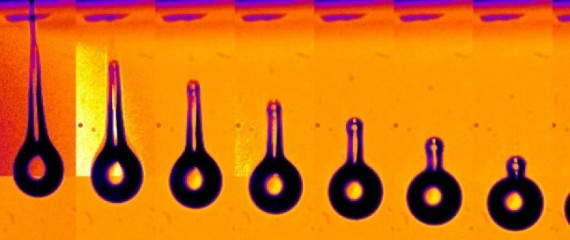
Understanding fluids and their behaviour is key to developing new manufacturing processes and a wide range of applications. Professor Ian Hutchings, Head of the Inkjet Research Centre, and Dr Ronan Daly, Head of the Fluids in Advanced Manufacturing Group, explain how the IfM’s research in this area has evolved over the last ten years – and where they see it heading.
We are surrounded by examples of the importance and spectacular behaviour of fluids in everyday life. We take for granted that our drinking water may contain a certain level of bacteria, dissolved salts and metal ions. We understand that our blood has to have exactly the right fluid properties to travel around our bodies and, with the advent of high-speed imaging, we have become increasingly familiar with slow-motion views of milk splashing into coffee, insects skating across the surface of a pond and other demonstrations of the power of intermolecular forces.
At the IfM, we use our knowledge of these phenomena to put important functional materials into fluids and use them in manufacturing. The formation and use of very small droplets of liquids supports many technologies from medical devices such as drug inhalers to fuel injection systems in cars, as well, of course, as inkjet printing, a technique which can be applied in a wide range of contexts and which is currently undergoing rapid growth into new areas of manufacturing.
Inkjet printing
From newspapers to food packaging, from magazines to junk mail and roadside advertising, we live in a world of printed materials. The size of the global commercial printing market is around $650 billion per year, roughly twice the market for consumer electronics. Most of this material is still printed by traditional methods such as lithography, flexography, gravure and screen printing, which can achieve very high quality at low cost.
But these methods start to become cumbersome and relatively expensive for short print runs and it has been here, at least initially, where inkjet printing has made significant inroads into the market. Conventional printing methods share a common feature: the pattern to be printed is reproduced by direct physical contact with a template which has to be altered to make any change in the pattern. In inkjet printing, the pattern is formed by tiny drops of ink and the position of each drop is encoded in a digital file. So the printed pattern can be very easily changed, and short runs or even one-off prints become much more feasible.
The formation and use of very small droplets of liquids supports many technologies from medical devices such as inhalers to fuel injection systems in cars, as well, of course, as inkjet printing.
But inkjet is not just about putting ink onto paper. Its techniques make possible completely new areas of application. Any liquid with the right properties can, in principle, be deposited by this method, making it a versatile and scalable digital manufacturing process capable of printing sensors, microfluidic elements, electronic devices, and being used as an additive process for 3-D printing. As a non-contact printing method, it can be used to print onto delicate or rough surfaces, such as decoration on ceramic tiles or conducting tracks on fragile silicon solar cells.
Inkjet at the IfM
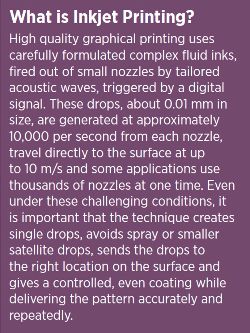 |
Although inkjet printing is a global industry and the leading companies producing printers for the desktop market are based outside the UK, Cambridge lies at the hub of a local cluster of companies involved in the technology of commercial inkjet printing. Many can trace their ancestry to work carried out at Cambridge Consultants in the 1960s and 70s. About 15 years ago, staff at the IfM, including Professor Rick Mitchell who had been Technical Director of Domino Printing Sciences, started discussions with several of these companies, and in 2005 the Inkjet Research Centre was founded, supported by a five-year research grant from the EPSRC and a consortium of ten companies. These included most of the leading UK manufacturers of inkjet components, printers and inks. The objectives of the project, which involved collaboration with academic colleagues in the Departments of Chemical Engineering and Applied Maths in Cambridge and in the Universities of Aberystwyth, Durham, Leeds and Manchester, were to extend our understanding of the processes by which small drops of ink could be formed and manipulated in inkjet printing – and especially to study the role of the flow properties of the ink. In 2010 the Centre received a five-year EPSRC Programme Grant for further research and collaboration: Innovation in Industrial Inkjet Technology (I4T). These projects and others have brought academic expertise from the IfM and elsewhere to bear on important current issues, and have been greatly enhanced by the willingness of the industrial partners to share their thinking with the researchers.
The Fluids in Advanced Manufacturing (FIAM) group, together with the Inkjet Research Centre, is building on over 10 years of research excellence at the IfM. With much of the underpinning science and infrastructure already in place, the two groups are exploring together new processes and applications, always with the aim of achieving useful industrial outcomes. To that end they work very closely with industrial partners and with other academic disciplines.
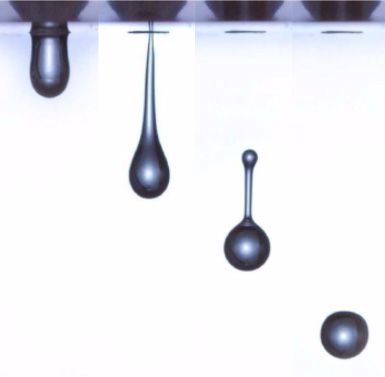
Current research
Being part of the IfM – with its inherently multidisciplinary approach to manufacturing – is valuable in this regard. While the Inkjet and FIAM teams address the scientific and technical challenges of developing new manufacturing processes and applications, colleagues specialising in areas such as business model innovation, supply chain configuration or national innovation policies can help identify the market and operational risks of manufacturing a particular technology at a commercial scale.
A recent project undertaken with the Centre for International Manufacturing, for example, looked at how inkjet printing can be used throughout the pharmaceutical industry from R&D, through manufacturing to delivery to the patient. The sheer volume of research that has been published on the use of inkjet in this sector and the fact that its focus tends to be narrow – often looking at just one type of application and a limited range of pharmaceuticals – makes it difficult to get a clear picture of what inkjet technologies can offer and what barriers still need to be overcome if those technologies are to realise their potential. As a result of this research the team will be able to direct its attention to those areas where new developments are likely to have the greatest impact.
Overall, the Inkjet and FIAM teams’ research can be described as falling into three areas: advancing established industrial printing technologies, developing new or emerging technologies and understanding the underpinning science of drop behaviour.
Improving established industrial technologies
While inkjet-based manufacturing technologies have come a long way in recent years there is still work to be done. A major focus of our research is looking at the scientific phenomena that constrain current applications, such as how aerodynamic effects become increasingly important when printing at high speeds. Sensing and microfabrication applications need ultra-precision patterning which cannot always be produced by inkjet alone; we are looking to create a hybrid of existing technologies such as inkjet printing and laser ablation, or to deliver smaller drops using technologies such as electrospray. And we are developing better ways to measure drop speeds, volumes and properties when inkjet is used for applications needing high accuracy, as in printed electronics or the pharmaceutical sector.
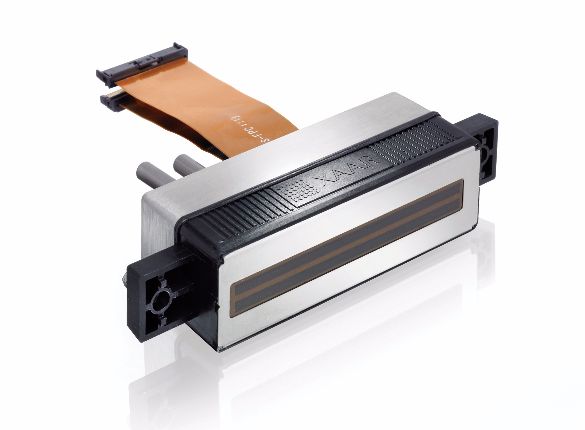 |
| Drop-on-demand industrial piezoelectric printhead. Credit: Xaar |
Developing new applications
Inkjet printing has led to a wide range of new applications including environmental sensing, biosensing, drug delivery and biomaterial design, all of which rely on the digital patterning of functional materials. We are working in a number of areas including creating droplets containing bio- and nano-functional materials that self-assemble into structures which are ideal for controlled drug delivery. Examining new approaches to formulation and deposition will allow fabrication of biological scaffolds with hierarchical structures for tissue engineering applications. We are also creating devices using micro-scale 3D printing for the next generation of ‘lab-on-chip’ diagnostics for testing devices which can be used to diagnose patients at the point-of-care, particularly in countries which lack healthcare infrastructure.
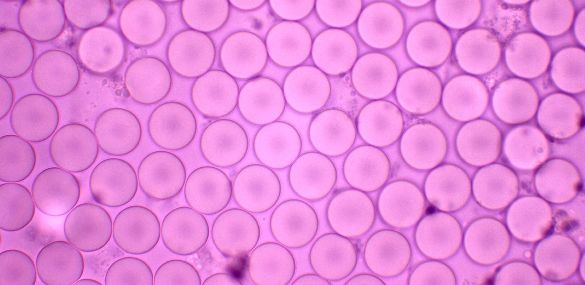 |
| FIAM is researching inkjet printed colloids for drug delivery applications |
Understanding the science of manufacturing and scale-up
As fluids pass through the printing process, they experience a complex and diverse range of forces and conditions. We are investigating how to formulate inks and create printing technologies that enable us to print biological components for sensing or tissue engineering applications, while ensuring they retain their essential level of activity. We are also concerned with what happens to complex, large pharmaceutical molecules throughout the printing process, from storage to travelling through the printer, to drop creation, landing and drying. How can we better control the steps? And how can we overcome the fluid flow, coalescence, diffusion and kinetic challenges so that we can deliver manufacturing-scale reactive inkjet printing?
Inkjet is not just about putting ink onto paper. Its techniques make possible completely new areas of application. Any liquid with the right properties can, in principle, be deposited by this method, making it a versatile and scalable digital manufacturing process capable of printing sensors, microfluidic elements, electronic devices, and being used as an additive process for 3-D printing.
These are just some of the areas we are studying. What they all have in common is a need to advance our understanding of the underlying science so that the digital patterning of functional materials can be made possible at an industrial scale. Inkjet printing has been – and continues to be – a success story but, in many ways, this is only the beginning.
Inkjet Research Centre
 |
| Professor Ian Hutchings E: imh2@cam.ac.u |
The Inkjet Research Centre (IRC) was established in March 2005, supported by a group of UK companies, to carry out research into the science that underlies this important technology. The IRC is home to experts in inkjet technology, fluid mechanics, visualisation, analysis and computation to study jet and drop creation, drop flight and drop/surface interaction. The Centre also examines application of inkjet to additive manufacturing, the printing of functional materials and biological components. The IRC also organises six-monthly meetings of the Inkjet Interest Group.
 |
| Dr Ronan Daly E: rd439@cam.ac.uk |
Fluids in Advanced Manufacturing Group
The Fluids in Advanced Manufacturing research group examines chemical and physical phenomena of polymeric, biological and nanomaterials when exposed to advanced fluid-based manufacturing techniques. Our goal is to join emerging technologies with novel routes to incorporation into devices in a multidisciplinary and industry-linked agenda. We also consider vital downstream risk factors to allow rapid integration and scale-up of our work into a functioning industrial value chain.
IfM Review Issue 5 Articles
 |
|
 |
|
 |
'A social network of things' - New approaches to asset management |
 |
|
 |
|
 |
|
 |
|
 |










